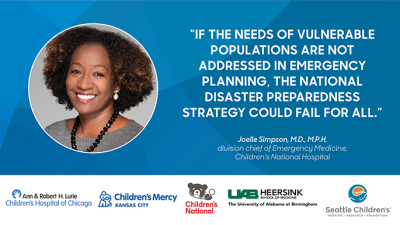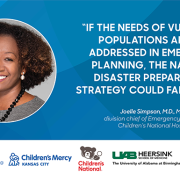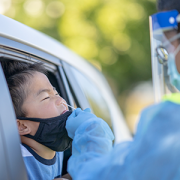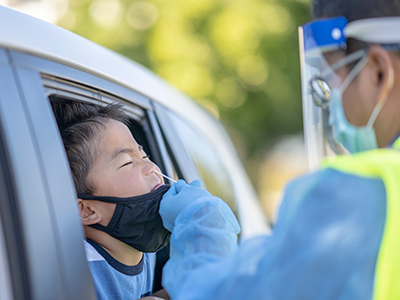Five leading children’s hospitals secure funding to enhance future pandemic readiness
 A group of children’s hospitals from across the country will coordinate on the response to future pandemics and other disasters through a new $29 million grant from the Health Resources and Services Administration (HRSA). The group, known as the Pediatric Pandemic Network (PPN), will focus on the unique needs and challenges to children during pandemics and disasters, ensuring that health equity is at the forefront of emergency planning.
A group of children’s hospitals from across the country will coordinate on the response to future pandemics and other disasters through a new $29 million grant from the Health Resources and Services Administration (HRSA). The group, known as the Pediatric Pandemic Network (PPN), will focus on the unique needs and challenges to children during pandemics and disasters, ensuring that health equity is at the forefront of emergency planning.
The five hospitals are:
- Children’s National Hospital in Washington, D.C. (lead institution)
- Ann & Robert H. Lurie Children’s Hospital of Chicago
- University of Alabama at Birmingham Department of Pediatrics at Children’s of Alabama
- Children’s Mercy Kansas City
- Seattle Children’s
“As the current pandemic has proven to the world, pandemics and public health crises magnify pre-existing environmental, health, social and economic inequities,” said Joelle Simpson, M.D., M.P.H., principal investigator of this grant and division chief of Emergency Medicine and medical director of Emergency Preparedness at Children’s National. “Communities of color not only feel the impact of pandemics and disasters far more severely than others, but also have more difficulty obtaining aid and assistance. If the needs of vulnerable populations are not addressed in emergency planning, the national disaster preparedness strategy could fail for all.”
The hospitals recognize that while the COVID-19 pandemic has been devastating for the entire world, the pediatric population in particular has been challenged by a lack of established coordination among pediatric care providers. In addition to addressing health equity, the funding facilitates the following:
- Establishing pathways to gather and disseminate research-informed insights into how to care for children in a future pandemic to both medical providers and community organizations.
- Developing a telehealth infrastructure to support the care of acutely ill children and expand mental health access.
- Expanding pediatric-focused emergency preparedness and planning with a focus on behavioral health, social support, and educational services, all of which are typically provided by community organizations.
The hub for this grant will be located at the newly opened Children’s National Research & Innovation Campus – the site of the former Walter Reed Army Medical Center in Washington, D.C. Work will take place in the renovated Armed Forces Institute of Pathology, where past investigators made seminal discoveries in infectious diseases and pandemics. The former campus was named after Walter Reed because of his work around discovering the cause and prevention of outbreaks of yellow fever. This modern-day team of physician researchers intends to make equally important contributions to future pandemics and other disasters to help preserve the health of our nation’s children.
In September 2021, HRSA launched the Regional PPN by funding five pediatric hospitals to support the planning and preparation of children’s hospitals to respond to a global health threat. This new grant doubles the size and reach of the network in order to benefit all children in the nation.





